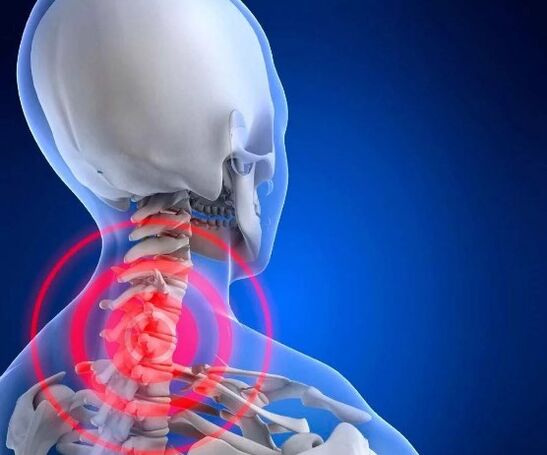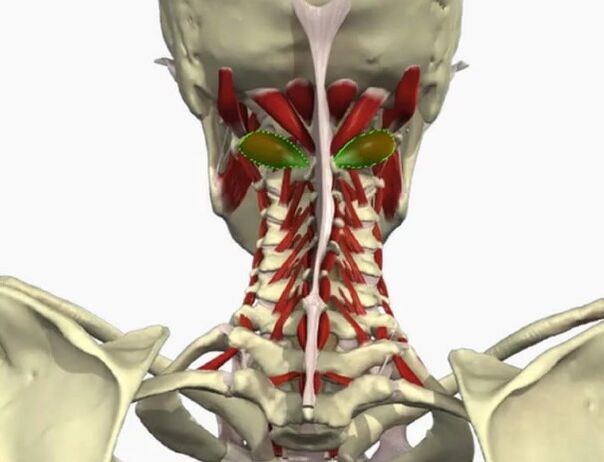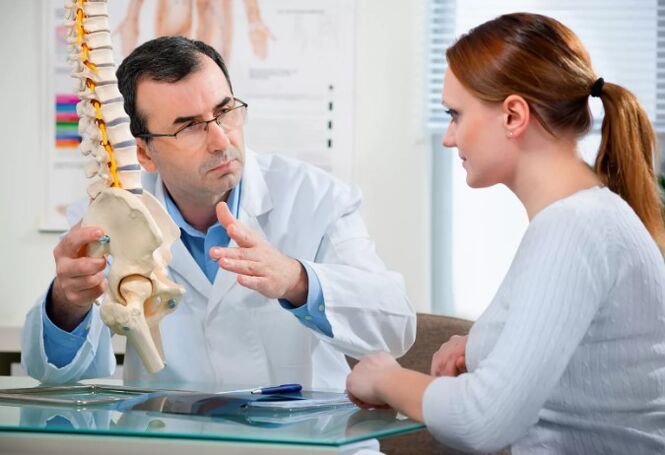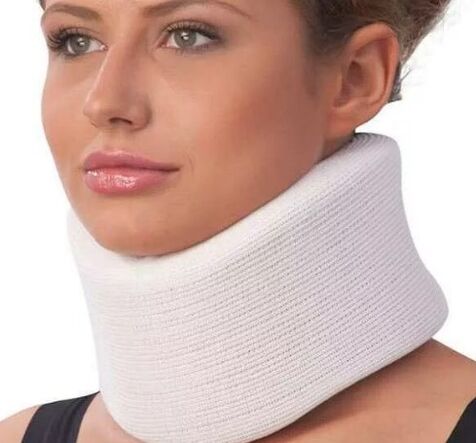Cervical osteochondrosis- This is a disease, which is a process of breaching food or gradual destruction of the cartilage tissue of the intervertebral joints and neck discs.

How to wear your head on your shoulders easily?
If it is difficult for you to turn your head when your name is on the street, if your neck does not literally keep the word and causes you only pain, then it is time to check yourself for osteochondrosis.
Partially the cervical part that is more prone to damage, as it is more mobile and at the same time has a weak muscle corset. In small removable beads, the body creates a large load. And the spinal canal itself is quite narrow. Squeezed squeeze easily on any pressure on it.
Thousands of people feel the severity at the back of their heads or feeling in their hands. And, not doubting the danger, they call them such physiological manifestations with fatigue and a common nearby cooling. A lot of blood vessels and nerve endings are focused on the neck. With osteochondrosis, the vertebral artery is squeezed, which provides brain food, an elongated brain and the back of the brain. As a result, a person's coordination for movements fails, a loss of a sense of balance is possible, vision falls, hearing worsens and sometimes this phenomenon leads to a stroke.
According to WHO statistics, people aged 30 to 40 suffer from cervical osteochondrosis. Doctors explain this trend with a massive reduction in physical activity. And the dominance of this disease in industrialized countries equals 60-80%.
Osteochondrosis syndromes and symptoms

The main causes of the development of the disease
Diagnosis of cervical osteochondrosis
The initial diagnosis of "osteochondrosis of the cervical-toracic department" or simply cervical department can do a physician already during the initial examination of the patient. The expert will determine:

All this together will tell you exactly how the disease flows. Further, the doctor will send to a number of exams:
Methodology of treatment for osteochondrosis of the cervical spine
The doctor will help choose the most optimal solution to the problem. And he will provide a variety of treatment methods: Medicines in combination with physiotherapy or prescribes an operation that saves for your body.
Conservative treatment- This is, first of all, medication therapy. It relieves pain, relieves muscle tension and quenches inflammation. For such purposes, non -steroidal anti -inflammatory (NSAIDs) and analgesics are prescribed. The chondroprotectors also fall on the recipe list to activate recovery processes in the merger cartilage tissue, as well as group B vitamins and external medicines: gel and ointments containing NSAIDs.
Physiotherapy, for his part, saturate the nourishing medium of the cartilage tissue of the intervertebral disc and contributes to the regeneration of the cartilage. The doctor will also write exercises on therapeutic gymnastics - to strengthen the muscle corset and to develop the flexibility of the ligament apparatus. You can do an introductory lesson with you in order to properly perform the exercises yourself correctly.

Surgical treatmentIt is appropriate if the drug and physical effects cannot be distributed. It is returned to him if the patient has a spinal cannon in a catastrophic way. Operational intervention is called cervical discoctomy. The surgeon immobilizes the affected spinal segment and removes intervertebral hernia, which suppresses the spinal nerve. Over time, the vertebrae, between which the disk was removed, feed. This is called spondylodesis. For more of them, a specialist can perform an operation with cage stabilization - that is, the intervertebral space is filled with an artificial insertion.
After 3-5 days, the operated one is described by the hospital for outpatient treatment. Rehabilitation requires an average of about 3 months and depends on the established implant and professional activity of the patient.
What is the best way to build a human lifestyle with a diagnosis of neck osteochondrosis?
The daily routine should include mandatory walks, while jumps and jogging are best to avoid. Next contraindicated for a long time to spend time in a sitting position, swimming is useful - not only strengthens muscle tone, but also facilitates spasms that restrict the body. In the evening it will not be excessive to take a hot shower (except for the period of cervical region treatment during irritation of the disease). It is important to follow the diet. Use magnesium and calcium -saturated products - nuts, dairy and seafood, legumes. We will have to abandon alcohol.
Is it possible to visit the sauna during osteochondrosis irritation?
Usually heat is useful for the patient, but after increased praise, you will have to refuse to dive into cold water. You cannot end up from frosts. Otherwise, a deterioration of the disease will occur. Cervical osteochondrosis is susceptible to any temperature difference, including climate. For example, autumn cooling can adversely affect a person's well -being.
What complications can arise after osteochondrosis of the cervical region?

If in time, when the first signs of the disease appear, in order not to begin a course of treatment, then the neck may stop persuading in the literal sense of the word. And the complications of this disease are quite serious. There is a risk of extension - the so -called "extension" of the intervertebral disc outside the spine, which is then able to gain the shape of a hernia. The nerve roots in the neck can be injured. Or osteophytes (bone growth in the beads) will appear. Words often weaken muscle or paresis - a condition when the head begins to hang on the side or forward. In this department, in the processes of the cervical vertebrae, there are vertebral arteries that feed the brain with blood. Violation of this bloodstream is one of the most serious phenomena. The unwillingness to be treated can lead to neuralgia, deafness and even vision loss. But if you deal with resolving the issue even in the early stage of its development, then the disease can be prevented.
Why do you need a crantic collar?
It is an orthopedic latch made of flexible material, which is used to immobilize the neck in the treatment of cervical osteochondrosis. But it is impossible to wear such a device for adjusting the neck for a long time, as the muscles can weaken over time, and you will get used to involuntarily steep head on the sides without additional support. Chansa reset does not allow the beads to move and maintain the corrective effect after the massage session. It takes over the weight of the head and distributes it evenly to the collarbon and the base of the neck. At the same time, the head remains in the right position.


























